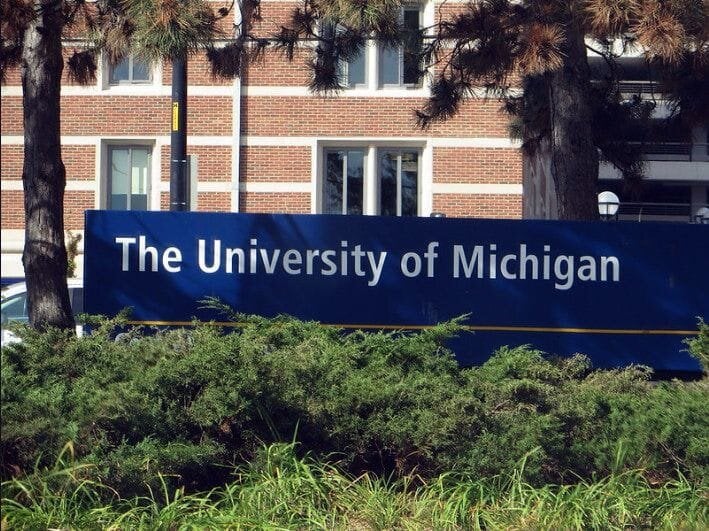![University of Michigan [Source: Ken Lund]](https://fabbaloo.com/wp-content/uploads/2020/05/image-asset_img_5eb08d8c01495.jpg) University of Michigan [Source: Ken Lund]
University of Michigan [Source: Ken Lund]
Charles Goulding and Greer Veon of R&D Tax Savers discuss the growth of 3D printing in the Detroit region.
As a leading U.S. hub for automotive, robot and general manufacturing, Detroit and the surrounding suburban area in Michigan is a critical center for 3D printing capability and the overall growth of the 3D printing industry. One challenge is that while Michigan is projected to provide 228,000 STEM jobs, only 4% of the Detroit public school system’s eighth-graders scored proficiency in math.
To narrow this gap, some ideas are:
-
Increase the rate of Detroit public schools STEM participation,
-
Offer more programs at Michigan community colleges,
-
Encourage 3D printer product sellers to offer more training in this region
A strong background in STEM subjects during grade school is quite important for individuals to succeed in those fields for college study. Therefore, programs using 3D printing can seize an opportunity to provide access to resources in an effort to aid STEM education.
Notable Accomplishments
Many of Michigan’s notable accomplishments in the 3D printing arena are happening at the higher education level. For example, researchers at the University of Michigan recently found a faster approach for 3D printing using light sources to print shapes from liquid resin at a much faster rate than conventional methods. The additive manufacturing approach could be made without the need for a mold which ranges around $10,000 and can be used to make more durable products such as dental devices and shoe insoles.
3D printing also serves as a major resource for college students beyond the classroom. Towards the end of 2018, Michigan’s Wayne State University introduced a 3D printer lab available for all students to design and produce items, such as toothbrushes, at no charge. Also benefitting from their university’s research are students in WSU’s Veterinary Medicine program, who are using models of jawbones, made by their own 3D printing lab. The models allow students to study and practice on the mammal skeletal system outside of the lab without damaging specimen.
![3D printed jawbone [Source: FormLabs]](https://fabbaloo.com/wp-content/uploads/2020/05/image-asset_img_5eb08d8c51c03.jpg) 3D printed jawbone [Source: FormLabs]
3D printed jawbone [Source: FormLabs]
While there is a push to see these kinds of programs being practiced at the public schools, some Detroit classrooms are making waves with STEM programming. Two of Detroit’s high schools are in the top 100 stem school rankings. A 2019 report says Metro Detroit’s Troy High School and Frankenmuth High School are at the top institutions when it comes to STEM learning. Troy High School shows a college readiness score of 61.8 out of 100 and Frankenmuth ranking at 59.8.
Google has also provided substantial STEM education grants in Detroit. The SMASH (Summer Math and Science Honors) Detroit 3-year program empowers underrepresented youth of color with strong STEM education, coursework, and accessibility to career resources in the tech industry. Taking place at Wayne State University, projections are that at least 300 high school students are to benefit from the program.
![Detroit [Source: Ken Lund]](https://fabbaloo.com/wp-content/uploads/2020/05/image-asset_img_5eb08d8caa463.jpg) Detroit [Source: Ken Lund]
Detroit [Source: Ken Lund]
It is well recognized that the 3D printing industry is on the cusp of converting from a design-only focus to large volume production. For example, Ford Motor Company is leading this conversion (see our recent Fabbaloo Manufacturing Aids article), but Ford can’t optimize the conversion without a trained workforce. Michigan companies and 3D product sellers should be able to use the R&D tax credit to assist with 3D printing production innovation.
The Research & Development Tax Credit
U.S. Suppliers with 3D printing capability who design and manufacture new parts for assisting with 3D innovation should be eligible for R&D tax credits.
Enacted in 1981, the now permanent Federal Research and Development (R&D) Tax Credit allows a credit that typically ranges from 4%-7% of eligible spending for new and improved products and processes. Qualified research must meet the following four criteria:
-
Must be technological in nature
-
Must be a component of the taxpayer’s business
-
Must represent R&D in the experimental sense and generally includes all such costs related to the development or improvement of a product or process
-
Must eliminate uncertainty through a process of experimentation that considers one or more alternatives
Eligible costs include US employee wages, cost of supplies consumed in the R&D process, cost of pre-production testing, US contract research expenses, and certain costs associated with developing a patent.
On December 18, 2015, President Obama signed the PATH Act, making the R&D Tax Credit permanent. Since 2016, the R&D credit has been used to offset Alternative Minimum Tax (AMT) for companies with revenue below $50MM and, startup businesses can obtain up to $250,000 per year in payroll tax cash rebates for up to five years.
Conclusion
The Detroit area can greatly benefit from 3D printing innovation, but the community ecosystem needs to continue working together and provide more educational resources in order to adequately address the skills gap.

